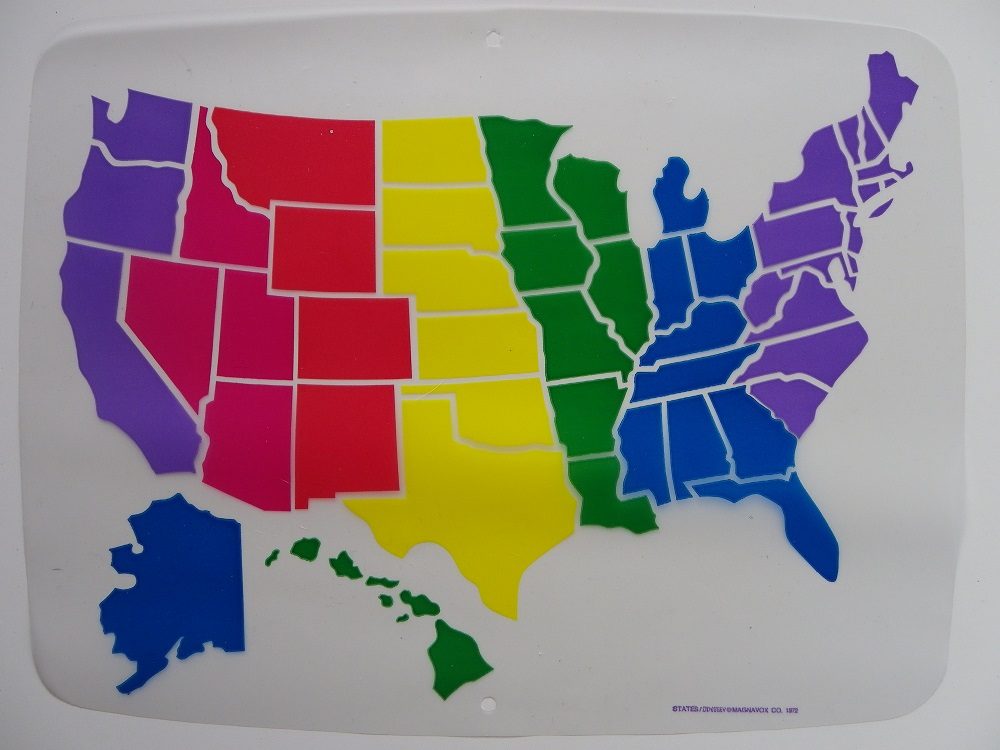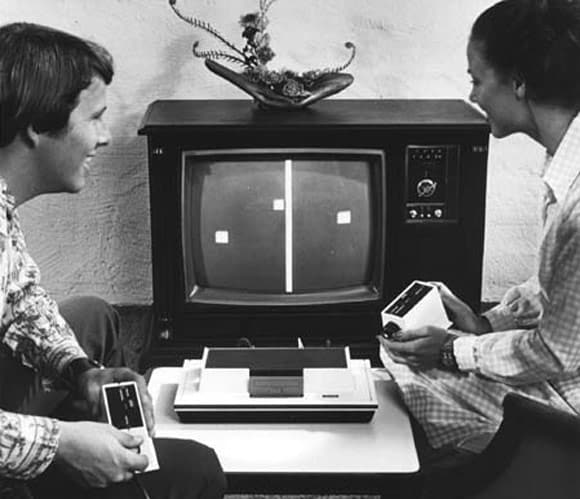
This year I have written articles about old school video game consoles like Atari 2600, Commodore 64, ColecoVision and ZX Spectrum, but I have not yet talked about the most important console in that period, and that’s the Magnavox Odyssey, which was the first commercial home video game console ever made. First released in 1972 long before those other consoles I mentioned even hit the market, the Odyssey had less technological prowess and as the first game console, Magnavox didn’t quite know how to market it to the public properly, which made it easy for consoles like Atari 2600 to surpass it in popularity. But its history as the first machine of its kind is arguably the most fascinating of all.
The idea for the Odyssey came from Ralph Baer, the man who became known as “the Father of Video Games.” Born in Pirmasens, Germany in 1922 as Rudolf Heinrich Baer the Jewish son of a shoemaker, he and his family later moved to New York City while Baer was a teenager because they feared persecution, and Baer even eventually became a U.S. citizen. Baer was a self-made factory worker in the U.S. but he soon shifted from industrial work to the field of electronics where he discovered his true passion.
In 1940, Baer graduated from the National Radio Institute as a radio service technician, and after serving as a military intelligence officer in World War II he would earn a Bachelor of Science degree in television engineering in 1949, something that was still rare for someone to possess in the forties. He went on to help build medical equipment and power line carrier signaling equipment for several companies, including tech corporation IBM. In 1956, Baer joined military contractor Sanders Associates in Nashua, New Hampshire where he became the head of equipment design. At that company, Baer led a team of 500 engineers, but he only needed a few for his most ambitious project which he was developing on the side: an electronic game that could be played on your television screen.

Baer had already known the intracacies of building television sets from his time working at Loral Electronics in the early fifties, and he is said to have been inspired by the technological capabilities of remote controls when he came up with the idea of playing games on a television, but that idea was so radical that it wouldn’t be until 1966 when a tech company decided to invest in it, which Baer had convinced Sanders to do.
Baer and his team would build an electronic box that could transmit a signal to a television set, similar to the way you could tune into a television channel. Mind you Baer came up with the blueprint for this in the sixties, back when the video game industry didn’t even exist in the public eye yet, and long before Atari’s Pong took the world by storm. After demonstrating a prototype of the wonder device to Sanders, the CEO and even a few board members saw commercial potential, and some even found it fun to play themselves.
The games on the console could be played by up to two players through the manipulation of buttons and knobs on rectangular joy pads connected to the console by wires, now known as controllers. The black-and-white-colored device would only be capable of displaying images in monochrome which consisted of pixelated dots and lines, and it neither had sound capabilities nor the ability to keep track of your scores, but design-wise it set the basic standard for every video game console that followed it.

Baer and his team had created a ping pong game to be played with a three-dial controller, a joystick-controlled chasing game and shooting game with a prototype light gun which could be aimed at images on the television screen, and it was at this point that Baer felt confident enough to pitch the console to a manufacturer that could help him get it out to the public. As video game companies didn’t exist yet, Baer pitched the device to television companies, many of which expressed enthusiasm but few of which were actually willing to put up the money for it, until Baer finally reached a deal with Magnavox. Baer demonstrated the console’s capabilities to Magnavox’s executive board in 1969 and an agreement to produce the machine was reached in 1971, with Magnavox dubbing it the Magnavox Odyssey.
Using Baer’s design as a jumping off point for them to take control of the project, Magnavox made a lot of alterations before getting the console out in public, including bundling it with playing cards and plastic screen overlays which unfortunately made it feel like a children’s toy. Magnavox market tested it in a few cities and showcased it in Las Vegas and New York City before officially launching it in 1972, advertising it as “the new electronic game of the future” and receiving an enthusiastic response from those who played it, although Baer believed it could have sold a lot better if Magnavox didn’t limit the market to special Magnavox dealerships.
By 1973, national advertising began. The Odyssey cost $99.95 on the market, and $50 for those who bought it with a television set. Once Magnavox began showing it to the public, demand for the console increased by the year, until 1975 when Magnavox discontinued its production due to rising inflation, which apparently made the production costs higher than its estimated market value. That same year, Magnavox made a version that was cheaper to produce called the Magnavox Odyssey 100, which came with the games Tennis and Hockey, and its deluxe counterpart the Magnavox Odyssey 200, which contained the same games as the 100 in addition to Handball. Magnavox would continue releasing different versions of the console with different tweaks, upgrades and features between the years 1976 and 1977, including the Magnavox Odysseys 300, 400, 500, 4305, 2000, 3000 and 4000, with the European Philips Odyssey consoles introduced in 1976 after Dutch TV manufacturer Philips purchased Magnavox in 1974, and finally the Magnavox Odyssey 2, which was released in 1978 and competed directly with second-gen consoles like Atari 2600, Intellivision and ColecoVision until it was discontinued in 1984.

The first Odyssey did not use ROM cartridges like later game consoles but instead required game cards, which could be plugged into the console and allowed for different control schemes. Games with similar control schemes could use the same game card. The entire Odyssey software library was spread across 11 game cards. But like I said, it was not a sophisticated machine so players had to keep track of the rules of the game and track the scores themselves. The U.S. version of the console came included with Table Tennis, Ski, Tennis, Hockey, Football, Simon Says, math game Analogic, the two-player chase games Cat and Mouse and Haunted House, target-shooting game Submarine, Roulette the game of chance and educational trivia game States. Games that were sold separately include Baseball, Volleyball, Handball, Basketball, animal-themed racing game Fun Zoo, tactical strategy game Invasion, racing game Wipeout, Brain Wave, W.I.N. and Interplanetary Voyage, plus shooting games which required the light gun including Shooting Gallery, dinosaur-hunting game Prehistoric Safari, the flight-themed Dogfight!, and the Old West-themed Shootout!






International versions of the Odyssey also included the game Soccer, and Percepts, a racing game and a match game in one, was available for free to players who filled out a survey card. And that makes 28 Odyssey games total.
Also a side note about the Odyssey’s Table Tennis: it inspired Atari to create Pong, which was of course so popular that it inspired many other video game companies to create Pong clones which, after Magnavox sued them all, earned Magnavox millions. A hard lesson learned by the video game industry about copyright.
While the Odyssey marks a historic first for the video game industry, Magnavox was not the best at marketing it. They didn’t even produce any new Odyssey games after 1973, and they rejected many of Baer’s proposals for how to make it better, including displaying the games in color. Although years later, Baer would be recognized for his groundbreaking achievements and be acknowledged by the president of the United States with a National Medal of Technology and Innovation, an honor Baer shares with people like Steve Jobs and Bill Gates. Baer and the Odyssey’s place in the history of video games and entertainment in general are gigantic.


